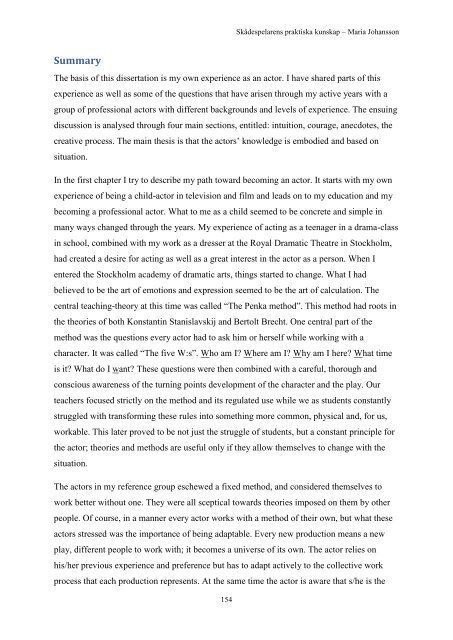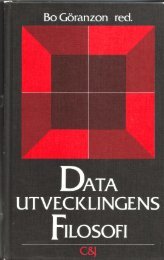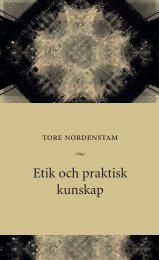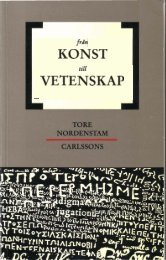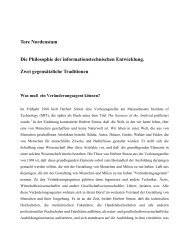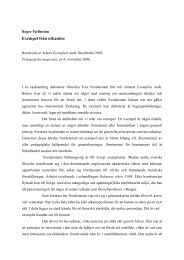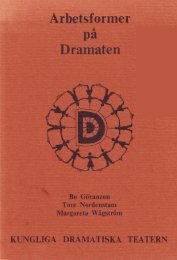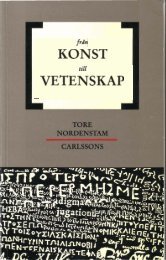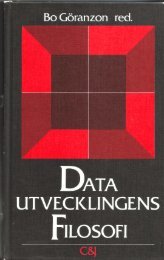Skådespelarens praktiska kunskap
Skådespelarens praktiska kunskap
Skådespelarens praktiska kunskap
You also want an ePaper? Increase the reach of your titles
YUMPU automatically turns print PDFs into web optimized ePapers that Google loves.
Summary<br />
154<br />
<strong>Skådespelarens</strong> <strong>praktiska</strong> <strong>kunskap</strong> – Maria Johansson<br />
The basis of this dissertation is my own experience as an actor. I have shared parts of this<br />
experience as well as some of the questions that have arisen through my active years with a<br />
group of professional actors with different backgrounds and levels of experience. The ensuing<br />
discussion is analysed through four main sections, entitled: intuition, courage, anecdotes, the<br />
creative process. The main thesis is that the actors’ knowledge is embodied and based on<br />
situation.<br />
In the first chapter I try to describe my path toward becoming an actor. It starts with my own<br />
experience of being a child-actor in television and film and leads on to my education and my<br />
becoming a professional actor. What to me as a child seemed to be concrete and simple in<br />
many ways changed through the years. My experience of acting as a teenager in a drama-class<br />
in school, combined with my work as a dresser at the Royal Dramatic Theatre in Stockholm,<br />
had created a desire for acting as well as a great interest in the actor as a person. When I<br />
entered the Stockholm academy of dramatic arts, things started to change. What I had<br />
believed to be the art of emotions and expression seemed to be the art of calculation. The<br />
central teaching-theory at this time was called “The Penka method”. This method had roots in<br />
the theories of both Konstantin Stanislavskij and Bertolt Brecht. One central part of the<br />
method was the questions every actor had to ask him or herself while working with a<br />
character. It was called “The five W:s”. Who am I? Where am I? Why am I here? What time<br />
is it? What do I want? These questions were then combined with a careful, thorough and<br />
conscious awareness of the turning points development of the character and the play. Our<br />
teachers focused strictly on the method and its regulated use while we as students constantly<br />
struggled with transforming these rules into something more common, physical and, for us,<br />
workable. This later proved to be not just the struggle of students, but a constant principle for<br />
the actor; theories and methods are useful only if they allow themselves to change with the<br />
situation.<br />
The actors in my reference group eschewed a fixed method, and considered themselves to<br />
work better without one. They were all sceptical towards theories imposed on them by other<br />
people. Of course, in a manner every actor works with a method of their own, but what these<br />
actors stressed was the importance of being adaptable. Every new production means a new<br />
play, different people to work with; it becomes a universe of its own. The actor relies on<br />
his/her previous experience and preference but has to adapt actively to the collective work<br />
process that each production represents. At the same time the actor is aware that s/he is the


